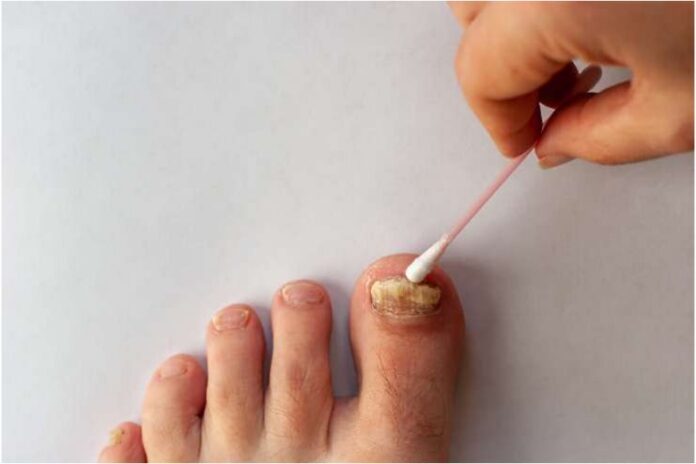Affiliate Disclaimer
Some links in this article are affiliate links. We may earn a small commission if you make a purchase through these links, at no extra cost to you. We only recommend products we find useful to our readersA dead toenail may appear to be a minor annoyance, but many people find it a cause of pain, suffering, and shame.
Whether caused by a toe-crushing injury, a persistent fungal infection, or just wearing those too-tight shoes, dead toenails are more prevalent than you might imagine.
This article will help you solve the mystery of dead toenails by examining their causes, warning signs, and the safest removal methods, whether you’re looking for long-term fixes, preventative advice, or immediate relief.
Also Read: How to Remove White Spots on Nails
What is a Dead Toenail?
Your toes’ sensitive bones, nerves, and soft tissues are shielded from harm by their toenails, which act as armor. Keratin, the same protein that makes up your hair, and the epidermis, the outermost layer of your skin, make up your toenails.
Although having a dead toenail may seem frightening, it happens frequently, particularly to people who are more likely to trip and become unsteady or to play sports. Although the term “dead” toenail may sound dramatic, it refers to a nail that has lost its vitality due to damage, infection, or other underlying problems.
It might appear visually as anything from a drab yellow to a sinister black, indicating anything from little bruises to total separation from the nail bed.
A dead toenail frequently feels thicker, brittle, and unresponsive—almost like a dead shell of its former self.
However, how can one distinguish between a dead toenail and one that is only bruised or damaged? Because of retained blood from trauma, a bruised toenail usually appears as a reddish or purplish spot underneath the nail. It hurts initially but usually goes away as the nail grows out. In contrast, a damaged toenail may be chipped or cracked but still securely affixed to the nail bed.
Causes of Dead Toenails?
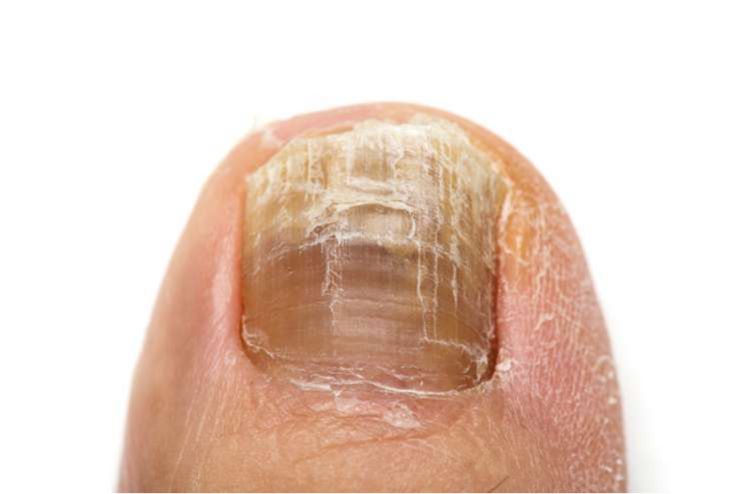
It is essential to recognize the causes of death toenails as early as possible for proper treatment. Below are some of the significant causes of dead toenails:
1. Wearing Wrong Size Footwear
Wearing shoes that are the wrong size can damage your nails. The main reason is the pressure applied to the nail due to the wrong size, which stops the growth of the toenail and turns its color dark.
2. Fragile Nails
Brittle nails are common among females, especially those over 50. They can split, flake, crumble, soften, and lose suppleness, increasing the risk of infection and inflammatory nail illnesses. Additionally, they may snag on clothing, linens, and other items. Brittle nails are more likely to occur when harsh nail care solutions, like nail paint remover, are used.
3. Trauma
A dead toenail is most prone to occur in those who are awkward and trip over objects or stub their toes. Athletes who wear tight shoes frequently sustain bruises and other injuries due to the shoe repeatedly striking the toe. Constant damage to the toe can change how the nail grows, which can cause the toenail to thicken and look incorrect. Around the toe’s tip, callouses and corns may also form, signifying extreme stress on the area.
4. Fungal Infection
Fungus infections of the toe can cause dead toenails. The fungus alters the nail plate’s structure and color. The nail can become yellow, brown, or white, thicken, have a crumbly or brittle feel, and even smell bad. If treatment is not received, it may cause irreversible alterations to the growth of your nails and occasionally prevent them from growing at all.
5. Onycholysis
Since the adhesive used to adhere the artificial nail to the nail plate is stronger than the natural link between the nail plate and the nail bed, people who wear acrylic nails are more likely to develop onycholysis. This means the nail plate can be lifted from the nail bed when the acrylic nail is removed. Additionally, artificial nails reduce the nail’s innate capacity to expel water, raising the risk of onycholysis by causing excessive moisture beneath the nail.
6. Leukonychia
A common nail ailment called leukonychia causes the nails to become discolored white. It is associated with various underlying causes, from minor manicuring habits to congenital diseases and other significant problems. In most cases, however, it is not a cause for concern.
Also Read: 16 Pain-Free Ingrown Toenail Removal Hacks
Symptoms of Dead Toenail?
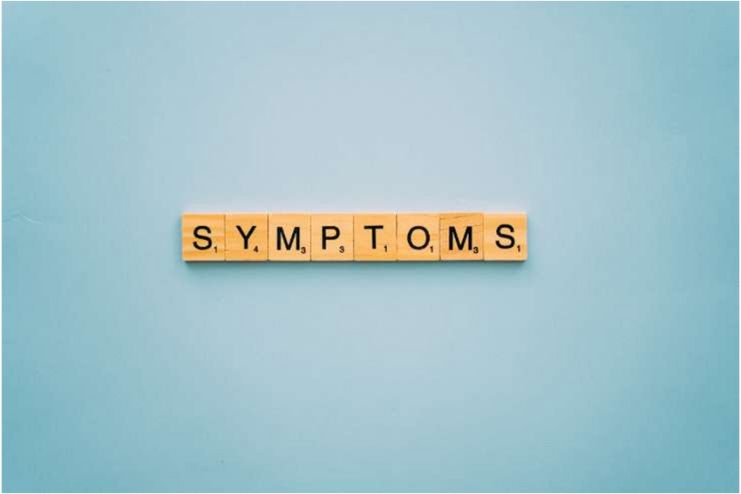
Some of the major dead toenail symptoms are listed here. These symptoms can prove helpful in providing effective treatment for the problem of the dead toenail.
Discoloration: Depending on the cause, the toenail may turn from a healthy pink to yellow, brown, or black.
Thickness: The nail may feel larger or heavier, frequently making it more difficult to trim or fit into shoes easily.
Loosening: A loss of attachment to the nail bed is indicated by the nail lifting or feeling separated at the margins.
Localized Discomfort: A persistent sensitivity or pain around the nail may indicate an infection or underlying injuries.
Swelling: The discomfort may be worsened by the surrounding skin seeming swollen or irritated.
Foul Odor: Bacterial growth or fungal infections under the nail frequently produce foul odor.
Pus or Redness: If you don’t treat the dead toenail right away, pus or redness could appear as clear signs of infection.
Reasons Not to Cut a Damaged Toenail at Home
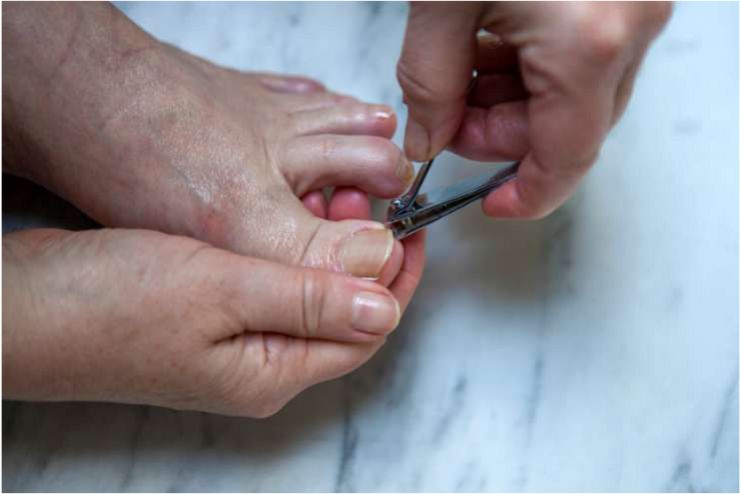
Although a wealth of information is available on how to remove your toenail, doing so is dangerous. Notably, your toe may have more injury than meets the eye. Any mistake could make your issues worse and require more help than if a doctor had done the treatment in the first place.
Infection:
A physician will work in a thoroughly sanitized setting with appropriately sanitized equipment. You won’t be able to do the same at home. Additionally, there is a significant risk of harming the skin surrounding the nail. Even the smallest amount of bacteria can increase the chance of getting a toe infection.
Permanent or Long-Term Harm:
A broken toenail can be a more serious problem than a fractured toenail because you have no idea what’s happening inside. If you have diabetes, you should undoubtedly avoid trying this. Diabetes that is not under control can impair circulation and cause foot sores to heal slowly.
When to Consult a Physician
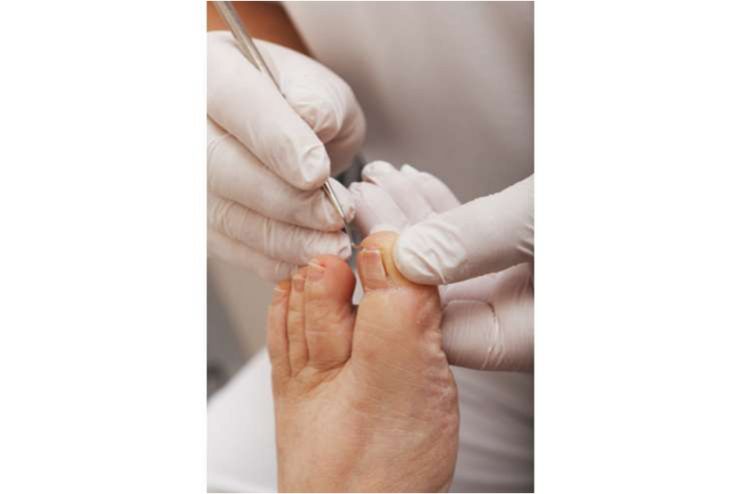
See your healthcare provider or a podiatrist (foot expert) if the redness, swelling, and other symptoms don’t alleviate. Consult your physician immediately if:
- You have chills or a fever
- Red lines on the skin radiating from the diseased area are visible
- Your muscles or joints ache
Your physician will examine your toe. You may need to undergo testing to determine what bacteria or fungus caused the infection.
If you have diabetes, see your podiatrist frequently to detect infections and other issues early. If you have any known foot issues, such as an ingrown toenail, you should also see a doctor more frequently.
Treatments
Your surgeon may remove the dead nail layers and trim your nail. Additionally, your doctor might recommend a topical drug. Topical treatment will not be able to penetrate the thicker nail if the infection is very advanced.
You may be able to take oral prescription drugs in certain situations. You use these when there’s a risk of infection or skin breakdown; they are pretty effective but require several months of use.
While nail removal can quickly alleviate symptoms, it may take a year for the nail to grow back, during which local fungal therapy may be appropriate. Itraconazole (Sporanox), griseofulvin (Fulvicin), and terbinafine (Lamisil) are examples of oral medicines. The duration of treatment varies, ranging from six weeks to a year.
Conclusion
Although dealing with a dead toenail may seem like a minor but bothersome annoyance, the first step to having healthy feet is knowing its causes, symptoms, and available treatments. Early detection of the symptoms enables you to treat the condition before it worsens, regardless of whether it’s the consequence of trauma, a fungal infection, or another underlying disease.
A dead toenail makes it obvious when it needs care, from discoloration and loosening to infection symptoms. Thankfully, you may restore the health of your nails and avoid more problems with the proper treatment.
-
Sep 2017Written by Prajakt
-
Jan 2025Edited by Ankita Sethy
References
- https://podiatryhq.com.au/dead-toenail-2
- https://www.verywellhealth.com/three-common-toenail-problems-1337804
- https://podiatryhq.com.au/dead-toenail
- https://www.healthline.com/health/toenail-problems#summary
- https://www.verywellhealth.com/three-common-toenail-problems-1337804
- https://www.webmd.com/first-aid/infected-toe
- https://www.footcaremd.org/conditions-treatments/toes/toenail-fungus
- https://www.webmd.com/pain-management/foot-pain-causes-and-treatments
- https://www.healthline.com/health/how-to-remove-a-toenail#safe-removal
In this Article














